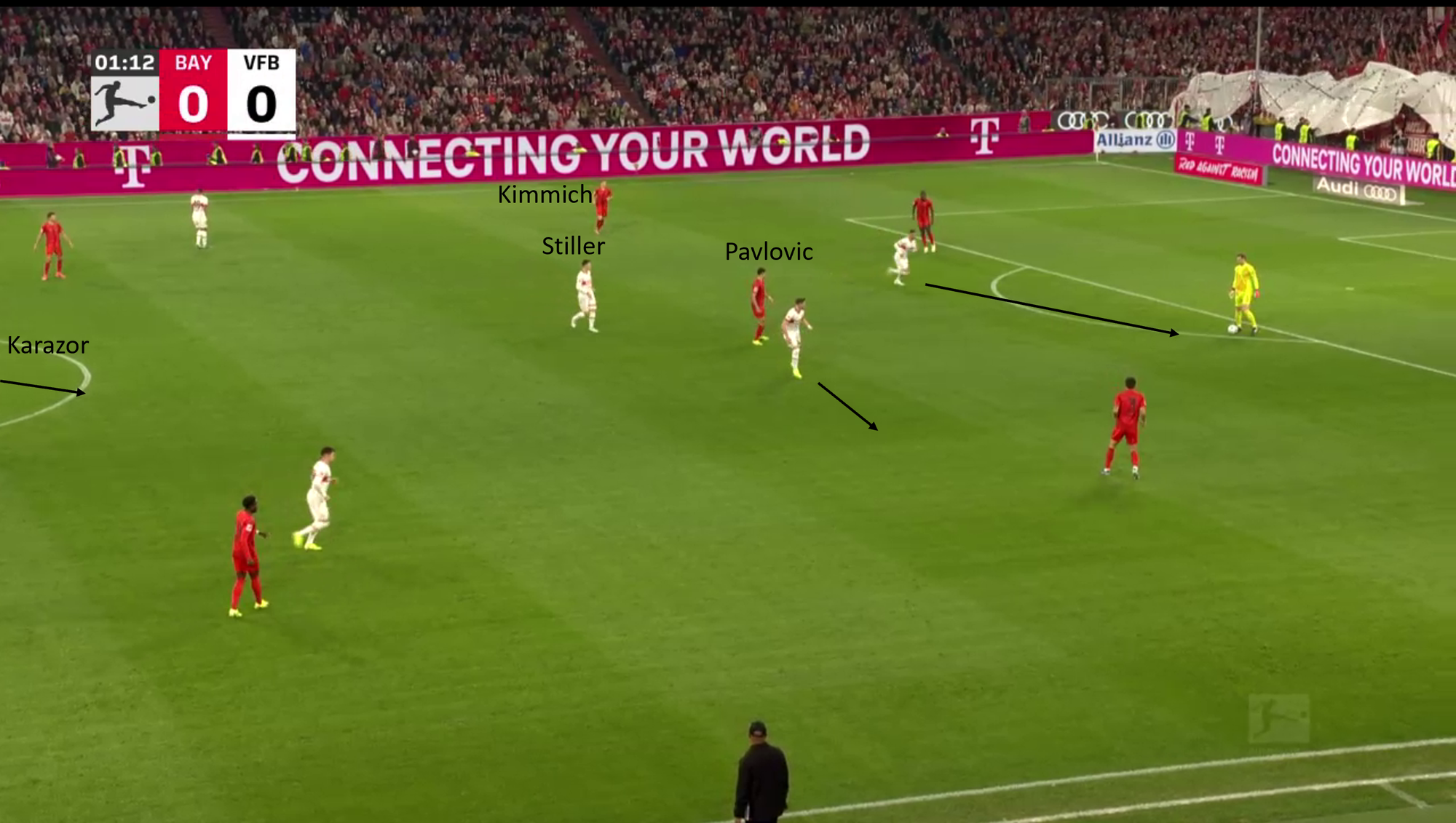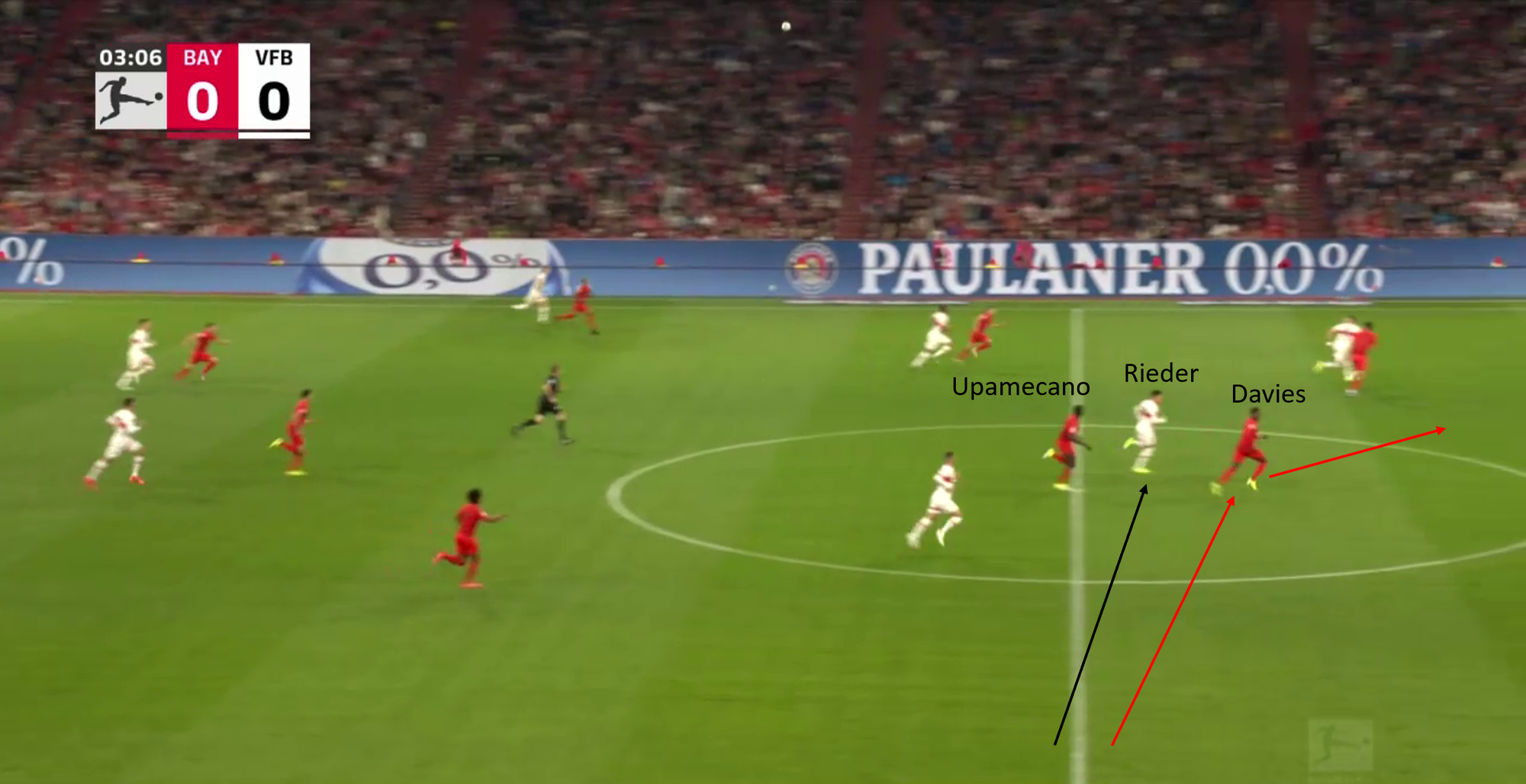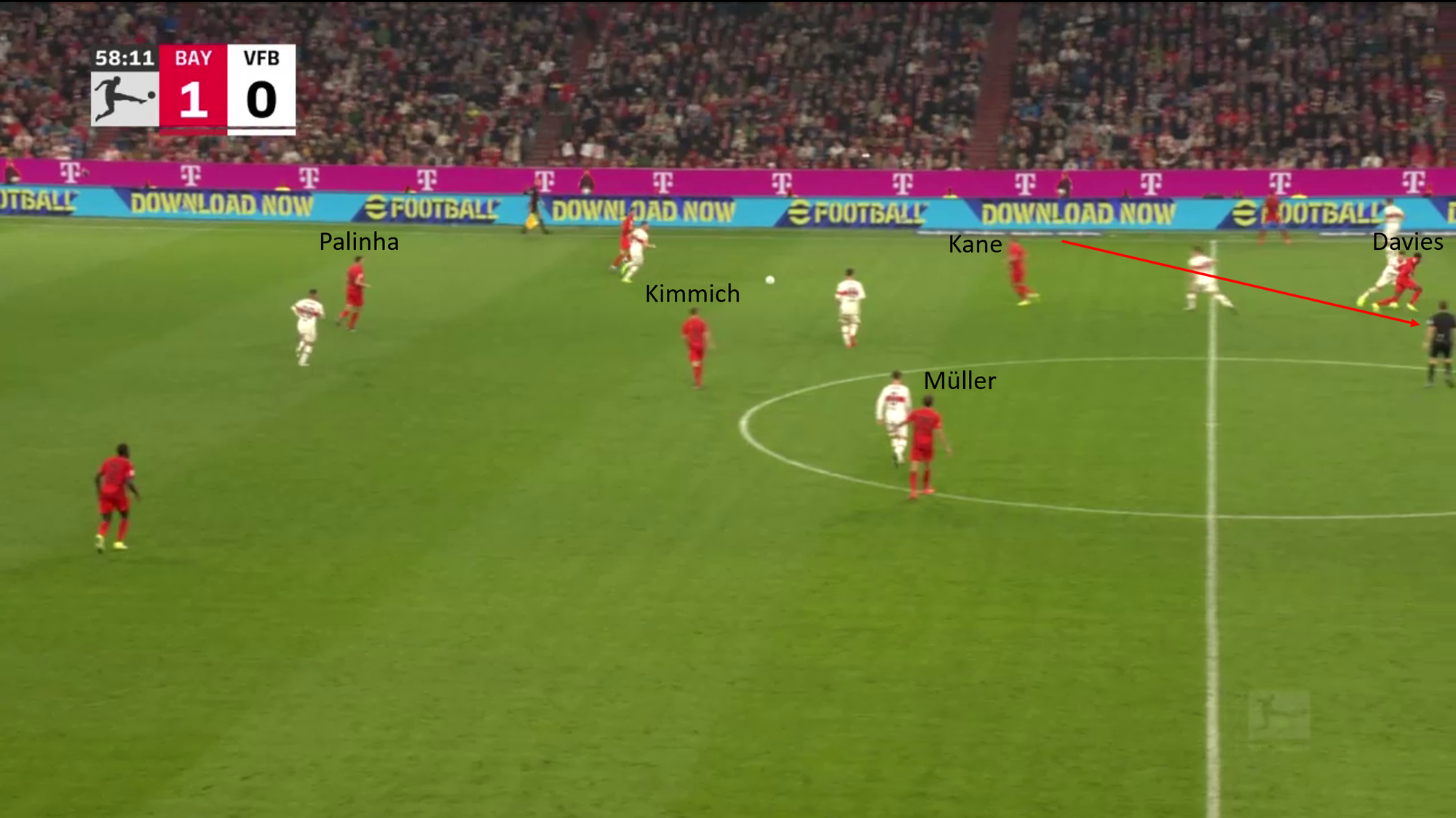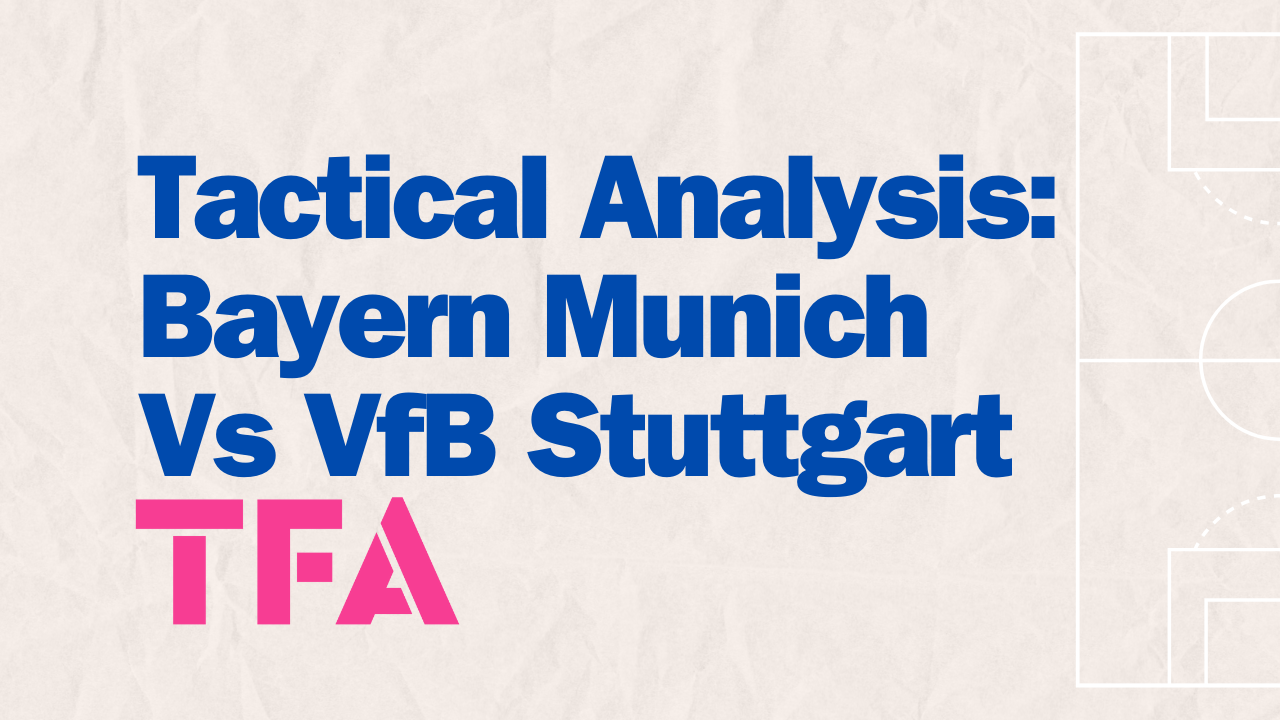On Saturday evening, the Bundesliga saw two of the best German teams from last season — 2023/24 runners-up Stuttgart and third-placed FC Bayern — face off.
Vincent Kompany‘s Bayern Munich, mainly through a dominant second half, defended their position at the top of the 2024/25 table, while Sebastian Hoeneß’s Stuttgart had an unusually low amount of ball possession.
This tactical analysis
, which is a post-match analysis, will go into detail on the key tactics that impactedthe outcome of this game.
Stuttgart’s Attacking Pressing Vs Typical Munich Build-Up Play
Under Sebastian Hoeneß’s tactics, Stuttgart started with a high press in their classic 4-4-2 pressing formation.
Stuttgart hybrid press in space but in a player-oriented manner, continuously directing Bayern into pressure on one side.
The numerical disadvantage caused by Bayern’s goalkeeper, Manuel Neuer — playing as a sweeper, is repeatedly balanced out with the help of Deniz Undav and Ermedin Demirović, who create cover shadows.
Bayern’s 3-1 build-up (with Neuer making it 4-1), often featuring Kimmich dropping deep as the pivot, is countered particularly well by Atakan Karazor and Angelo Stiller, who shows excellent risk/reward judgment.
The two Stuttgart defensive midfielders are rarely drawn out of the centre, instead covering for each other effectively.
At the same time, one can push out situationally to apply man-oriented pressure on Bayern’s back three.
This is especially important because it makes it difficult for Bayern to find their attackers in Stuttgart’s last defensive line.
The central space remains closed, and the passing lane to the dropping Kane can be blocked.

Stuttgart’s attacking press results in Munich having more possession, but it is mostly in their own half, preventing them from developing any real sustained pressure in the opponent’s third.
It is challenging for Munich to find a balance between positional play and fluidity or positional rotations against Stuttgart’s hybrid pressing.
This season, Bayern has stood out for its excellent response to man-oriented defending, using frequent positional rotations, and for its precise positional play against space-oriented defending (e.g., against Werder Bremen).
The absence of Jamal Musiala is particularly noticeable here.
Musiala, who regularly drops deep into his own half to create a numerical advantage in build-up play through his ability to win 1v1 situations, usually relieves the pressure on his teammates.
Additionally, it can be criticised that Stuttgart’s defenders were too rarely forced to choose between holding their defensive positions and attacking their opponents.
This would change in the second half, especially after the 55th minute.
VfB Stuttgart’s Build-Up Play
To understand why Stuttgart had so little possession, it’s worth taking a look at their build-up play.
Bayern pressed with their usual man-oriented approach across the entire pitch.
In response, Stuttgart played almost every ball long during their build-up.
This is actually a good idea against a man-oriented pressing system, as it allows you to create 1v1 situations on the last line easily.
While Deniz Undav repeatedly pulls a defender out of position, Demirović, Jamie Leweling, and Fabian Rieder are the primary target players.
However, the problem is that Rieder, in particular, frequently draws the fast Davies towards the centre near the ball, allowing him to cover behind Dayot Upamecano easily.

In addition, the high, long balls are hardly prepared.
There is a lack of the necessary variability to pose different challenges to the opponent and break down their man-oriented pressing.
The repetitive patterns help avoid losing the ball in their own half and allow Stuttgart to put pressure on Bayern in their half.
However, this does not lead to any real goal threat.
A nostalgic look back at the 1970s is worthwhile in developing possible solutions against Bayern’s play.
While not applied to such an extreme, it is interesting to examine the principles of Total Football under Rinus Michels at Ajax to manipulate the opponent’s man-marking.
It will be exciting to see what future solutions we might witness against Bayern’s style of play.
First, however, it can be noted that Bayern’s often criticised man-oriented pressing once again pays off.
They dominate through quick ball recoveries and prevent the opponent from getting into their rhythm.
Such control of the game would hardly be possible without this aggressive style of play.
Bayern Munich’s Goal Threat In The Second Half
As the second half progressed, especially from the 55th minute onward, under Vincent Kompany’s tactics, FC Bayern took control of the game in the opponent’s half as well since Stuttgart could no longer use their high hybrid pressing to keep the game in Bayern’s half.
“Formations are like phone numbers; they may not mean much on their own, but they can still bring certain characteristics.”
This 2015 quote from Bayern Munich’s current assistant coach, René Marić, describes the Munich team’s current style of play quite well.
In the second half, it is hardly possible to describe Bayern’s build-up play using formations.
Structures such as 3-2-5, 3-1-2-4, and 3-1-3-3 were frequently evident in the build-up play.
Notably, the recurring 3-1 build-up with a dropping six was prominent.
However, the most decisive adjustment occurred in the half-space positions.
Harry Kane, Thomas Müller, Raphaël Guerreiro, and, at times, Serge Gnabry or Michael Olise were often found close to their own penalty area in both the left and right half-spaces.

This way, the centre was overloaded, putting Stuttgart’s defensive midfielders in a difficult position in central defence.
At the same time, Stuttgart’s defenders were constantly placed in a dilemma between pushing out and applying pressure versus defending the centre with a numerical disadvantage and maintaining coverage on the last line.
To exploit both options of the Stuttgart defenders, Bayern frequently utilised the typical runs of full-back Alphonso Davies into the depth of the left half-space, getting in behind the defence.
Bayern consistently managed to push Stuttgart back into their own half to create possession in the opponent’s half.
From this dominance in the opponent’s half, dangerous counter-pressing moments were created.
For instance, the 1-0 goal resulted from a counter-pressing situation, and Bayern were also able to shift the play into Stuttgart’s half much more frequently for the aforementioned reasons—a key factor in the 4-0 victory.
Conclusion
Bayern’s dominance in possession and the result can be attributed to several factors, including their high man-oriented pressing, Stuttgart’s very rigid build-up against Bayern’s man-oriented pressing, and crucial overloads in the centre during Bayern’s build-up against Stuttgart’s still effective pressing in the first half.
Ultimately, it was a well-deserved victory for Bayern.
It will be interesting to see what ideas future opponents of the record champions come up with to disrupt the structures of Bayern’s man-marking.






Comments